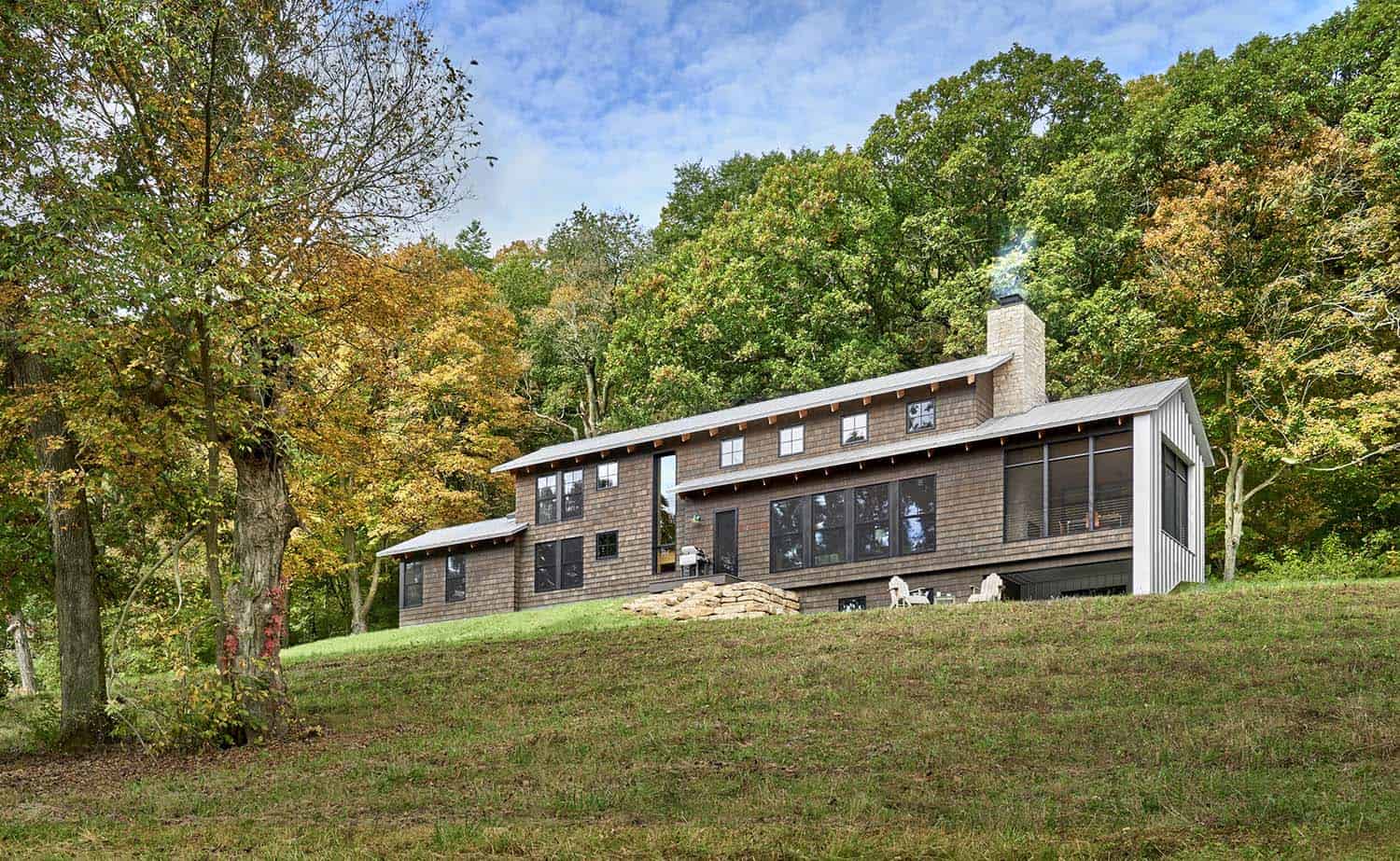
Searl Lamaster Howe Architects is responsible for the design of Haas Valley Farm, a 2,300-square-foot farmhouse retreat nestled on a sprawling property in Potosi, Wisconsin. Tall and thin, this three-story dwelling perches on its site which is centered in the Driftless Area, a small pocket of the Midwest so named because the glaciers skipped over the region, leaving a surprising landscape of rolling hills and deep valleys bisected by the Mississippi River.
The weekend getaway’s long and linear exterior stretches across a meadow offering views down to Grant River on one side and up to a limestone crested ridge on the other. The house’s form is simple yet jogs and intertwines to identify the spaces inside – the stair slice buffers the sleeping and bathing side from the social side of the house, containing a double-story great room whose low roof shoots out to shelter the screened porch.
The upper level has a narrower rooftop which slides into the great room volume creating the kitchen and bedroom overlap. All spaces offer views down the valley and up the ridge with large windows welcoming the peaceful setting.
Above: Viewed from downslope the home’s cedar shingles embed the house in the wooded site while the galvalume-clad roofs and end wall provide a contrasting lightness.
What We Love: This farmhouse in Wisconsin provides a wonderful rural retreat for a Chicago couple to escape city living. Surrounded by a tranquil woodsy setting, large windows help to draw nature inside for a relaxing environment. This home will offer a comfortable respite to enjoy the changing of the seasons and host overnight guests. Overall, the architects did a fabulous job of creating a warm and inviting countryside home for weekend getaways.
Tell Us: What are your overall thoughts on the design of this Wisconsin farmhouse retreat? Let us know in the Comments below!
Note: Take a look at a couple of other fabulous home tours that we have showcased here on One Kindesign in the state of Wisconsin: Escape into nature in this serene Wisconsin cabin: MetalLark Tower and This contemporary river house is the ultimate haven in Wisconsin.
Above: The road leading to the house winds through pastures and forest. Around the final turn, the western elevation emerges – the vernacular gable form stripped down its essence. The front entry is tucked below a low roof. Its unexpected color hints at some of the surprises to be discovered within.
Above: A cozy nook inside the main entrance to the house provides a spot to stow away muddy boots. The square window above the russet-colored bench frames a view of the ridge that starts to rise just outside.
Above: Contrasting with the pine that skins most surfaces in the house are the vivid blue of the kitchen cabinets. A backsplash of new and vintage tiles reflects both the tile company once owned by the father of one of the residents and the influence of Chicago craftsman/artist Edgar Miller. The piece positioned above the kitchen is entitled Blacktop and was painted by Susanne Doremus. The kitchen is nestled under an upstairs bedroom off the living/dining area, creating a dramatic change in scale between the spaces.
Above: The story and a half living room are enveloped in pine. The limestone cladding of the fireplace was mined nearby and is a material common to the region. A piece by Art Green, a key member of the Chicago Imagists art movement, looks down from above.
Above: The stairs wrap around a wood and blackened metal screen whose design is loosely based on the corn cribs and tobacco barns that dot the region’s rolling hills.
Above: Wrapped on three sides with windows and capped with a vaulted ceiling above, the relatively compact main bedroom provides both a sense of sanctuary and expansiveness. The painting, entitled “For the first time they met” by Daryl Trivieri introduces a spirit of off-kilter whimsy.
Above: The boldness of the kitchen’s collage-like backsplash is repeated in the main bath’s shower, this time in contemporary blue and white penny tiles.
Above: Handmade tiles contrast with crisp white plumbing fixtures to frame a view of a 200+ year old oak tree.
Above: A screen porch extends off the west end of the living room. It houses its own fireplace which allows three-season use of the space. Views extend out in three directions.
PHOTOGRAPHER Tony Soluri

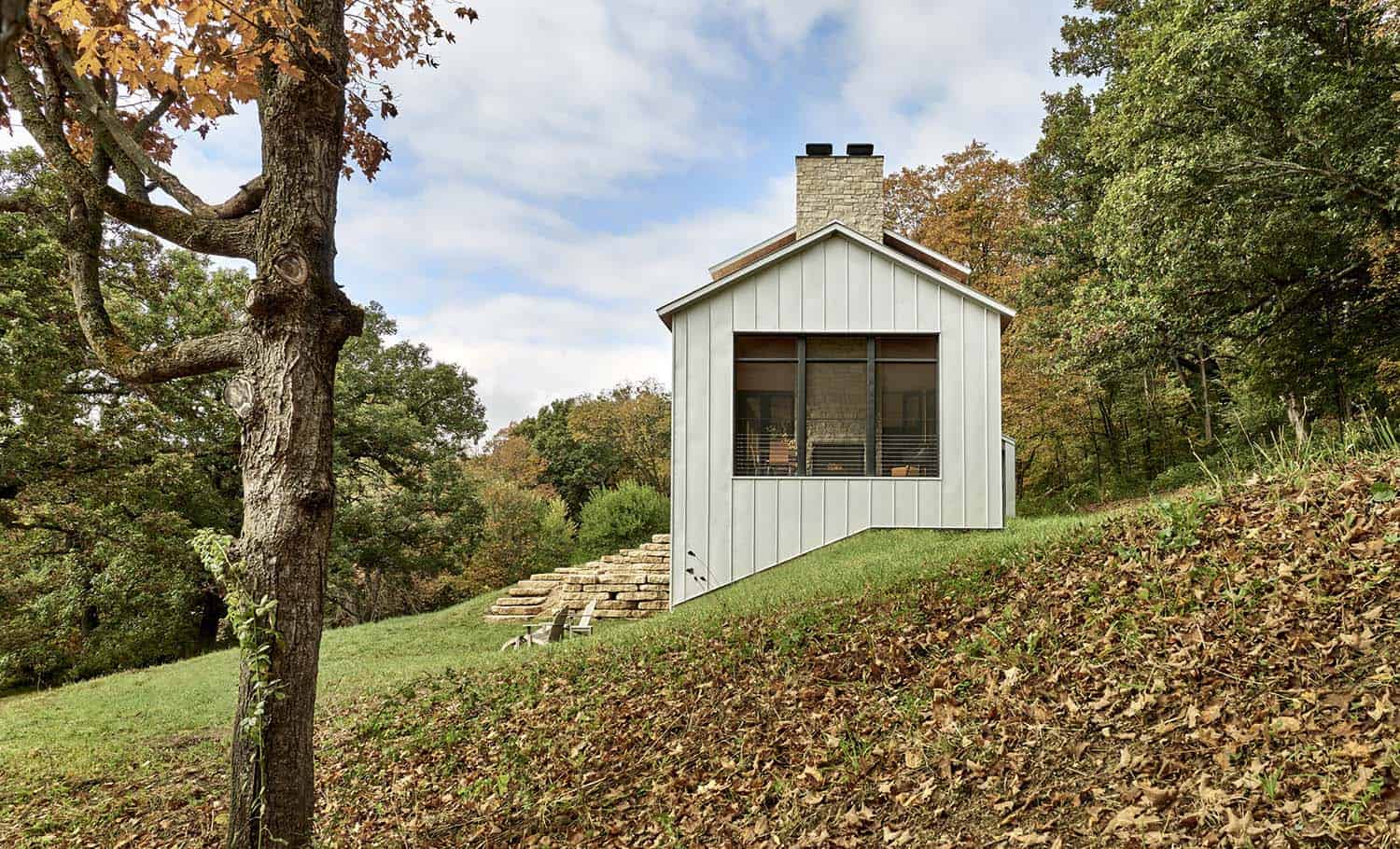
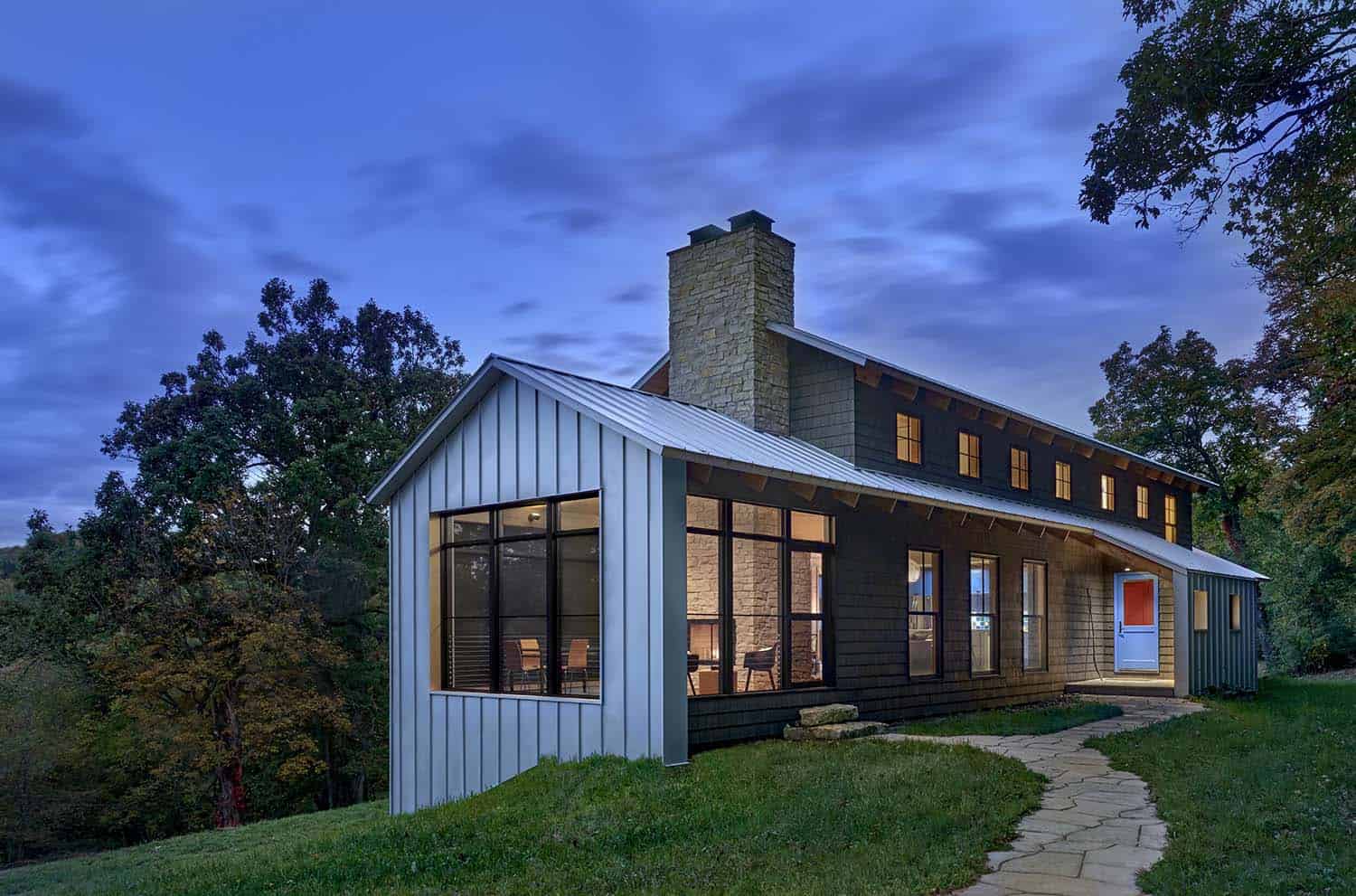
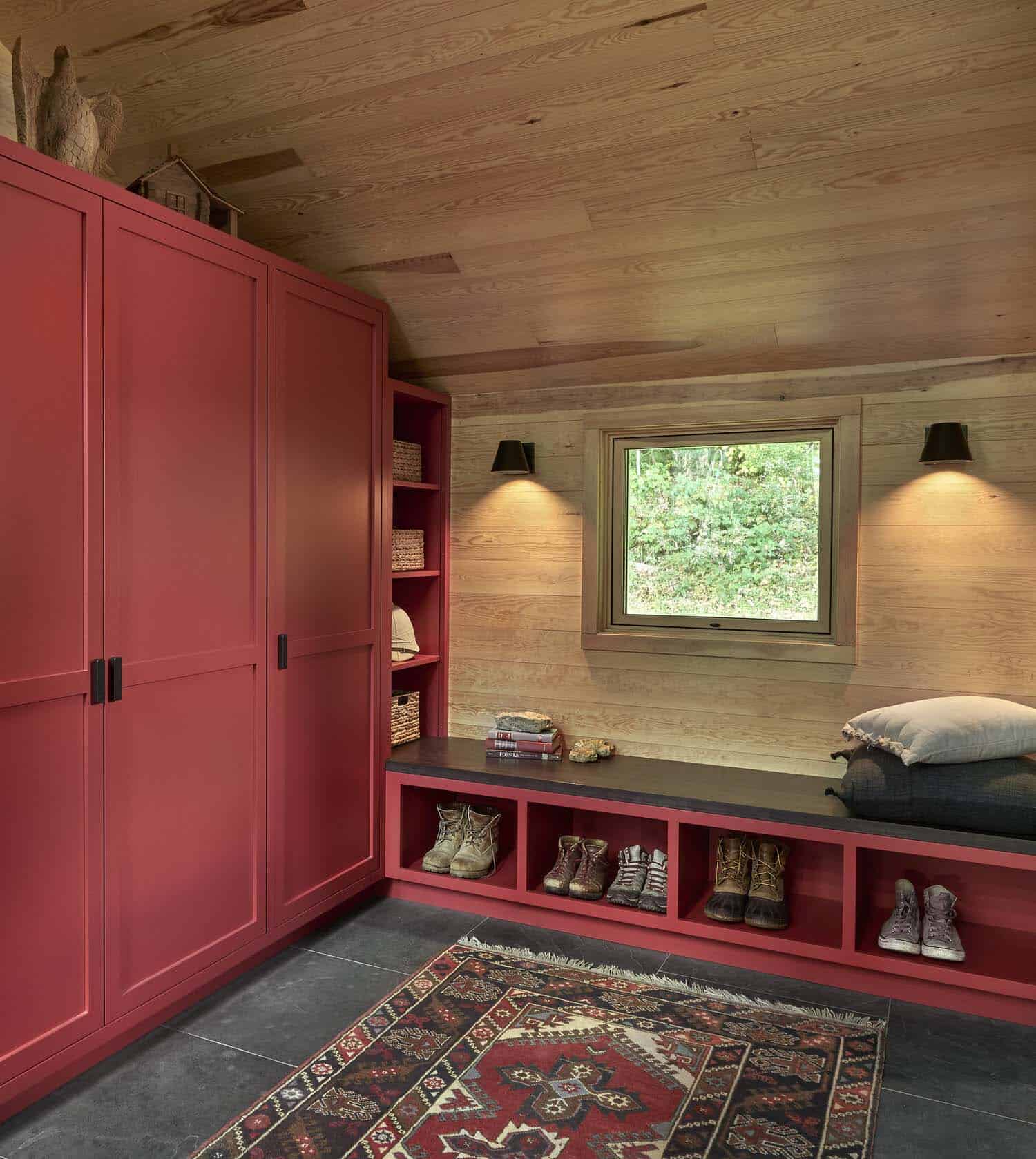

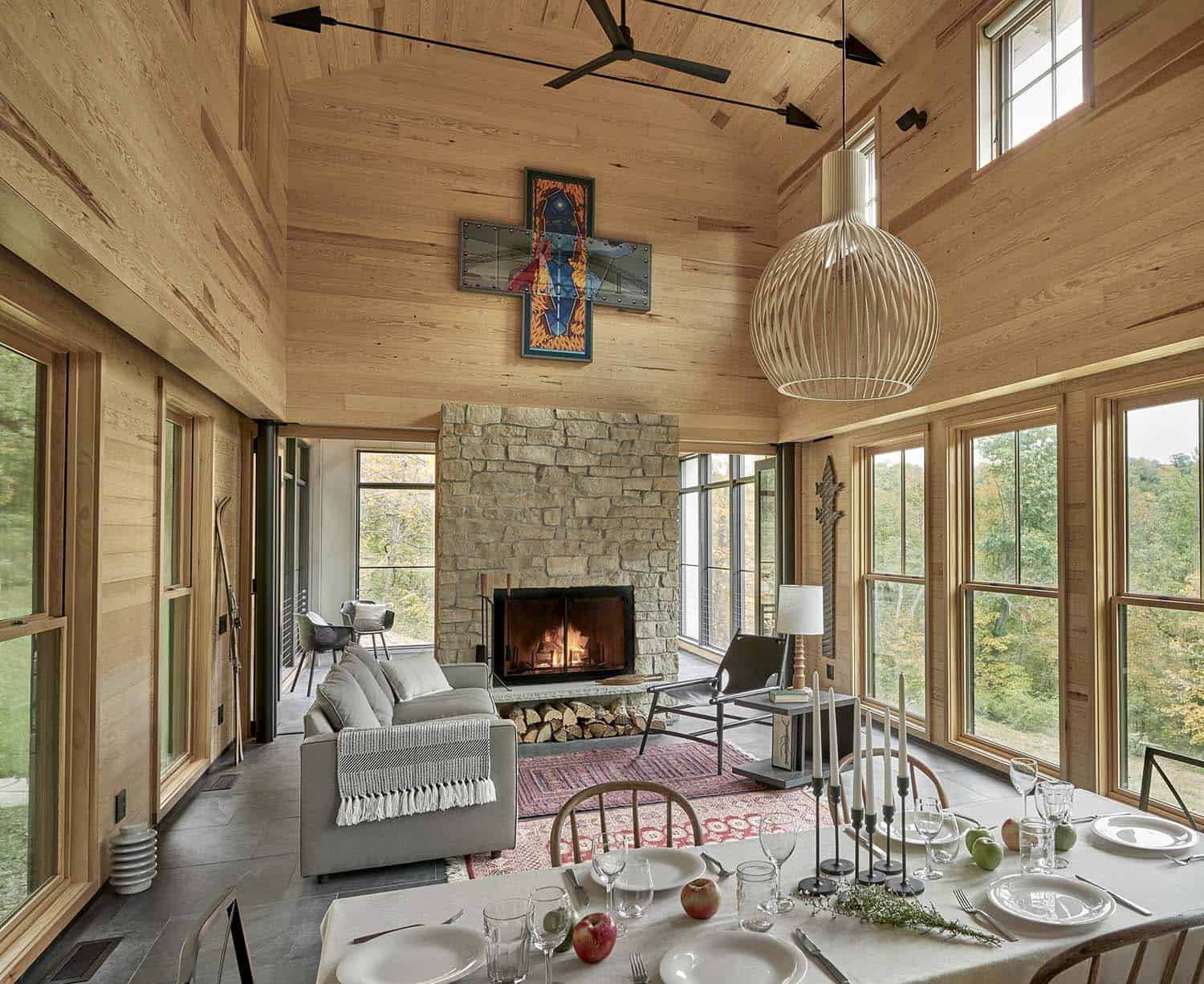
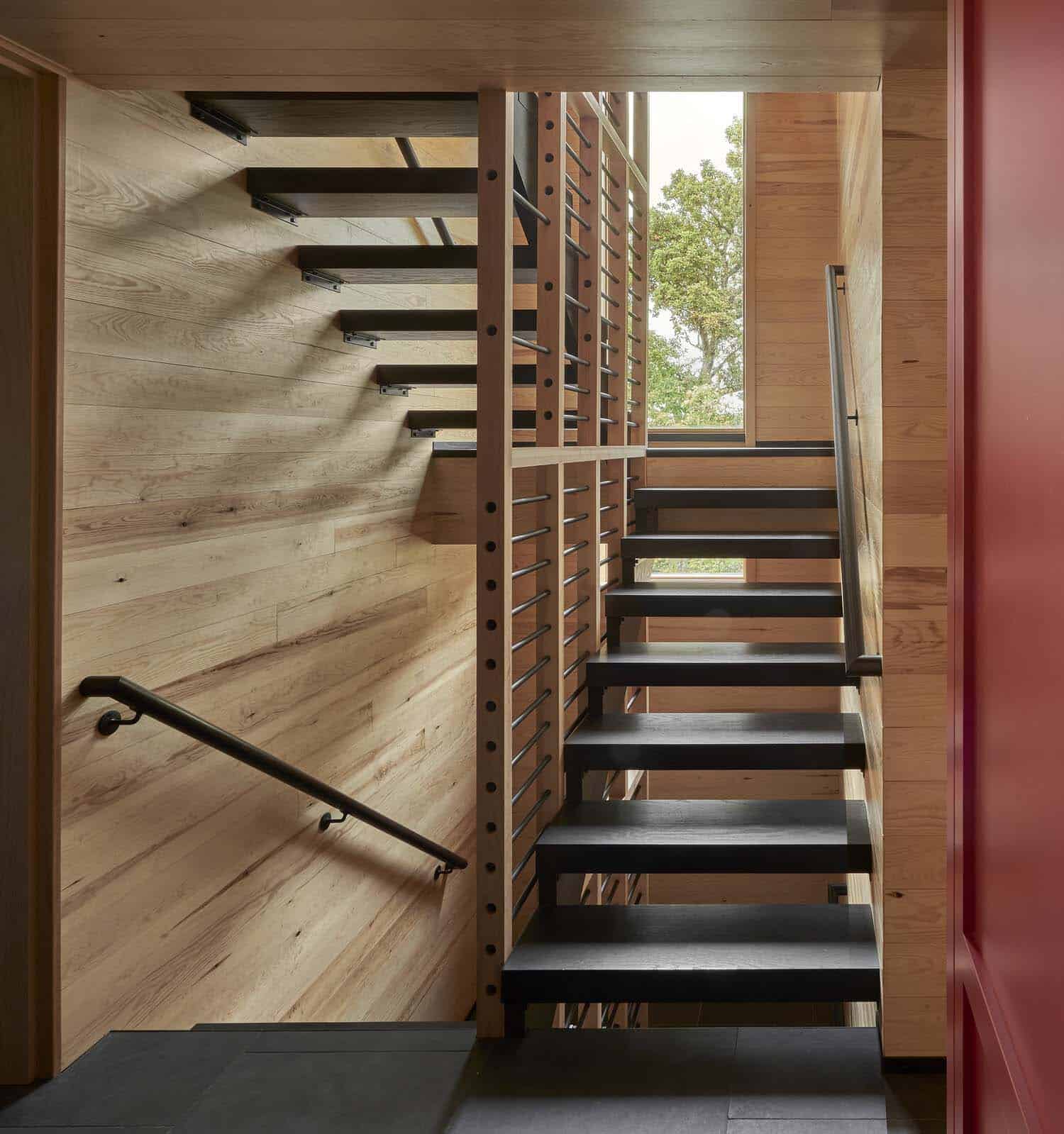
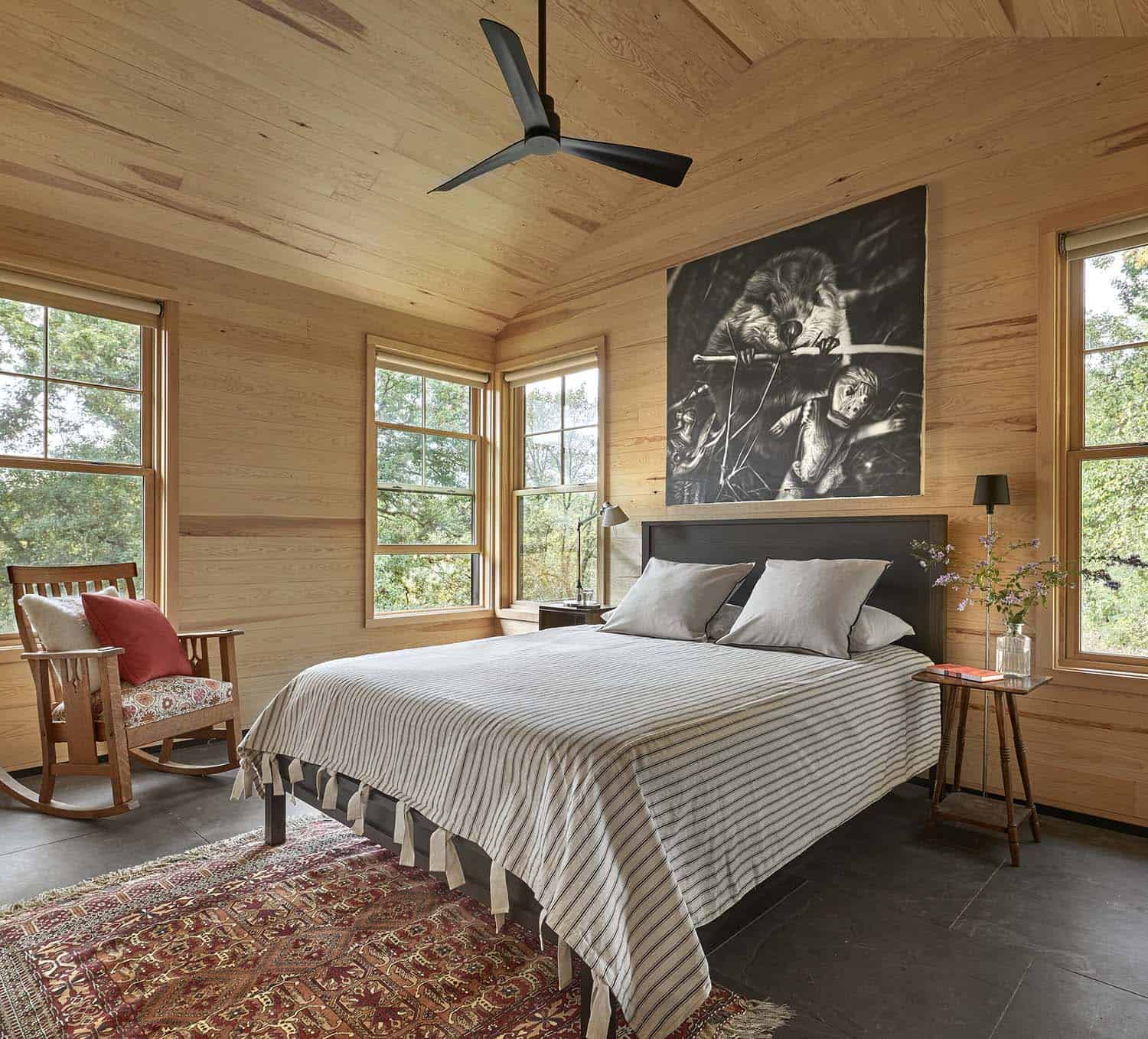
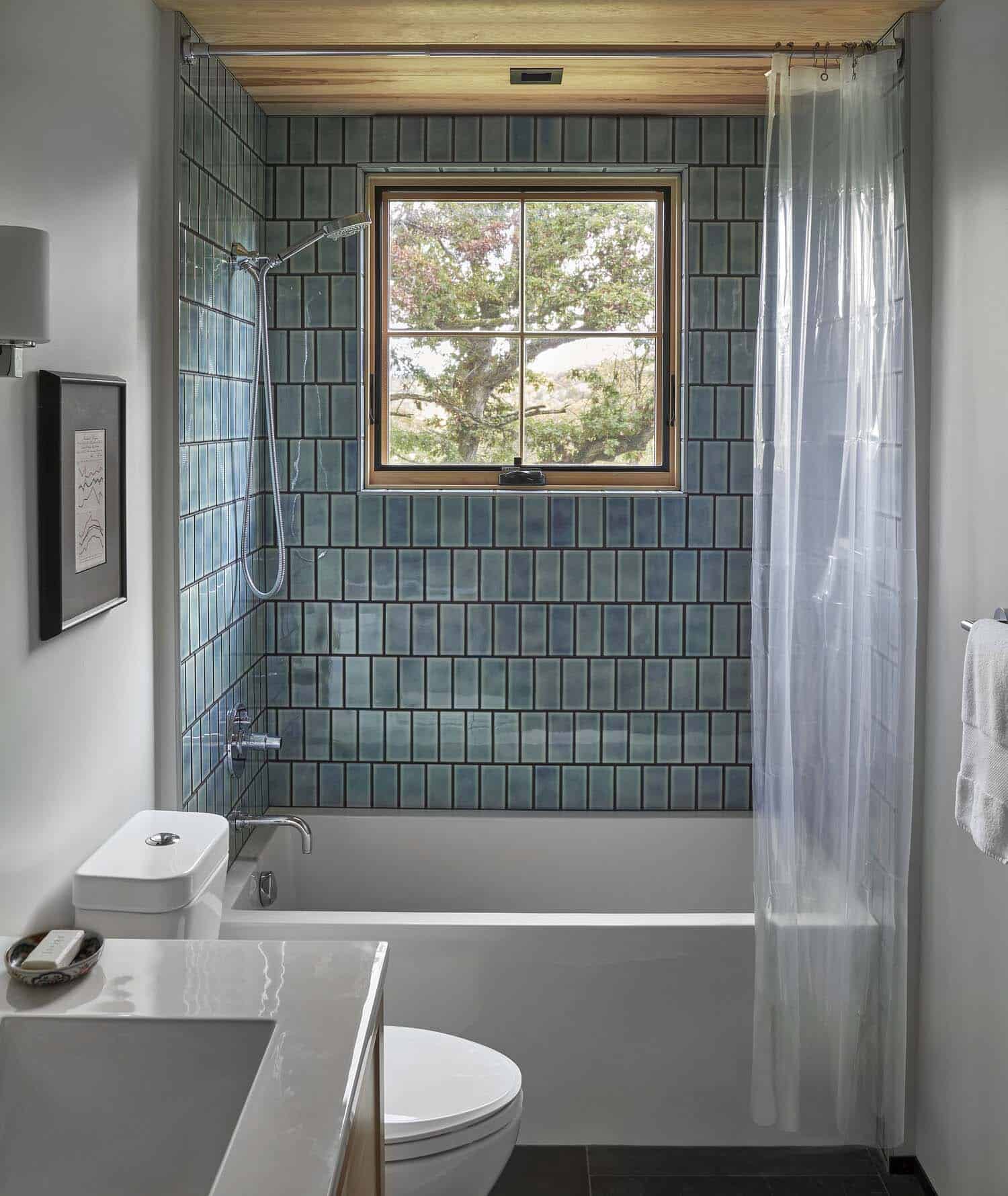
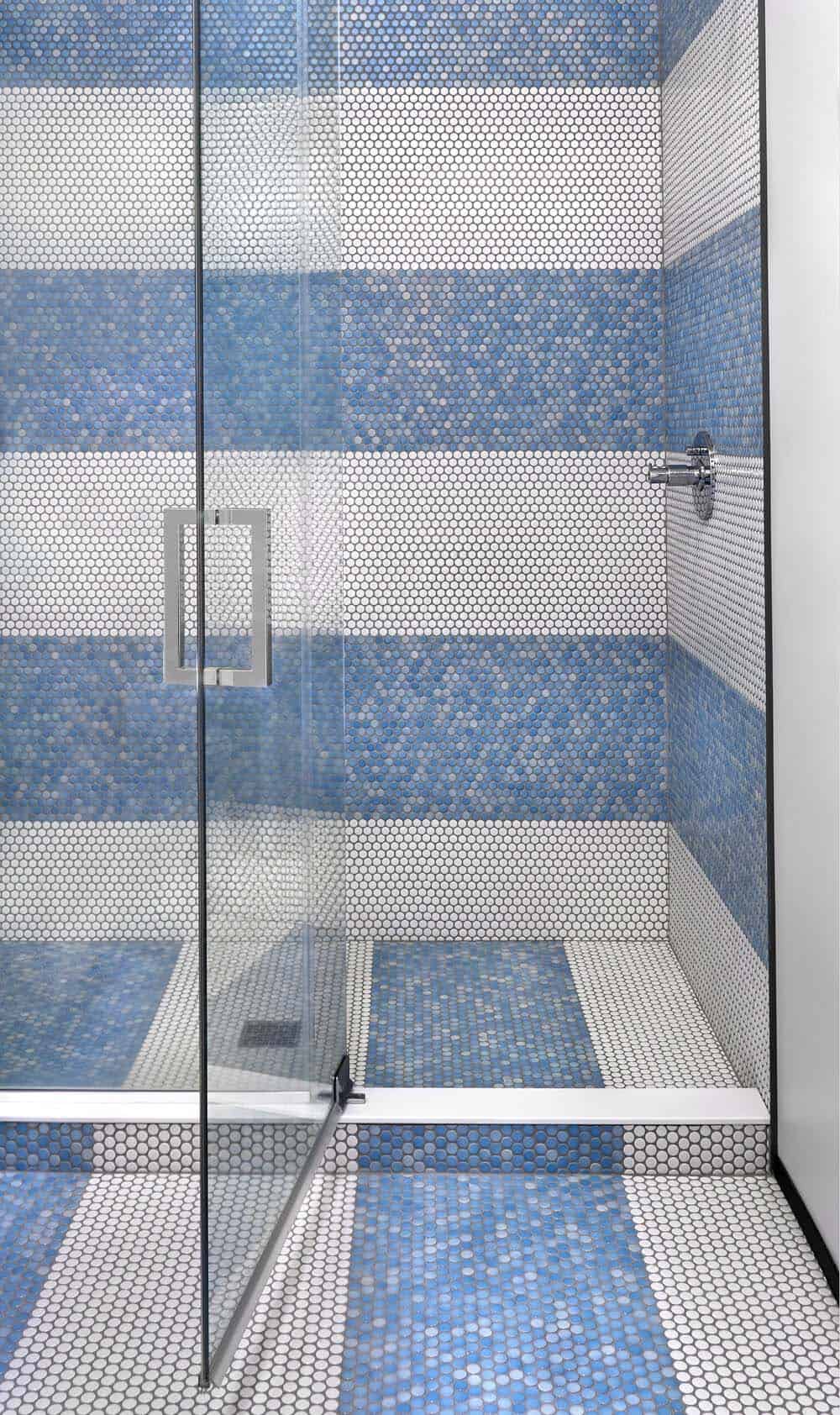
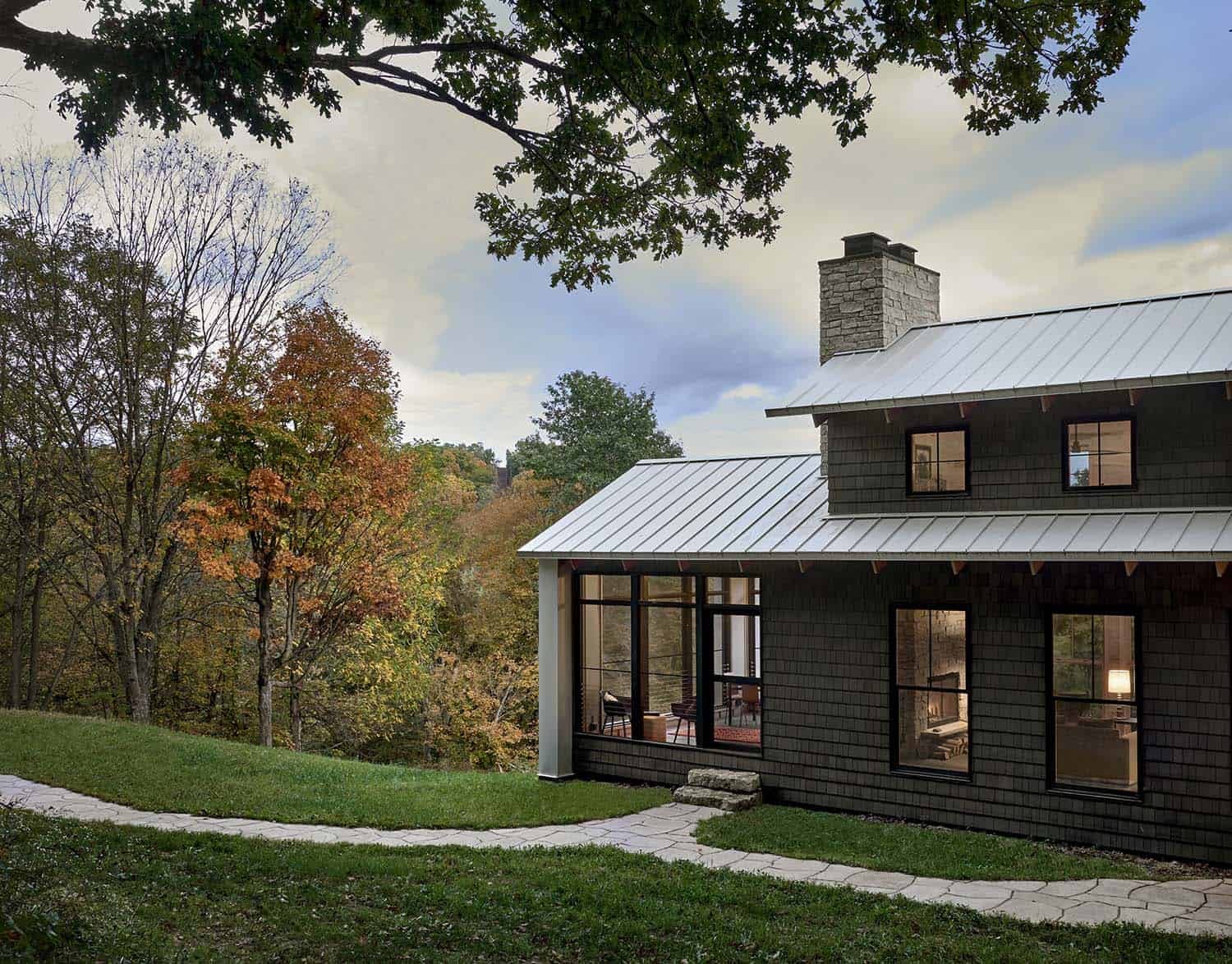
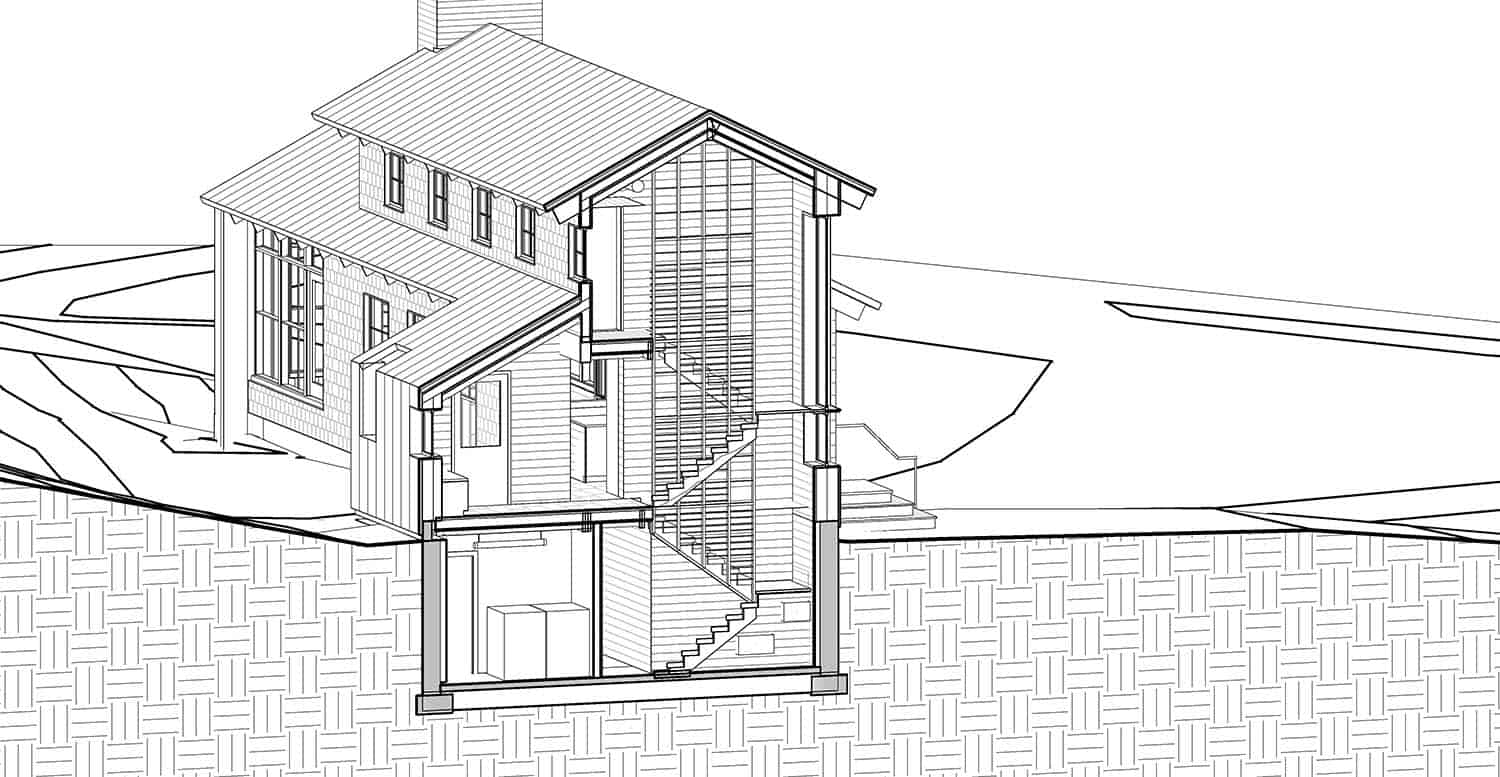
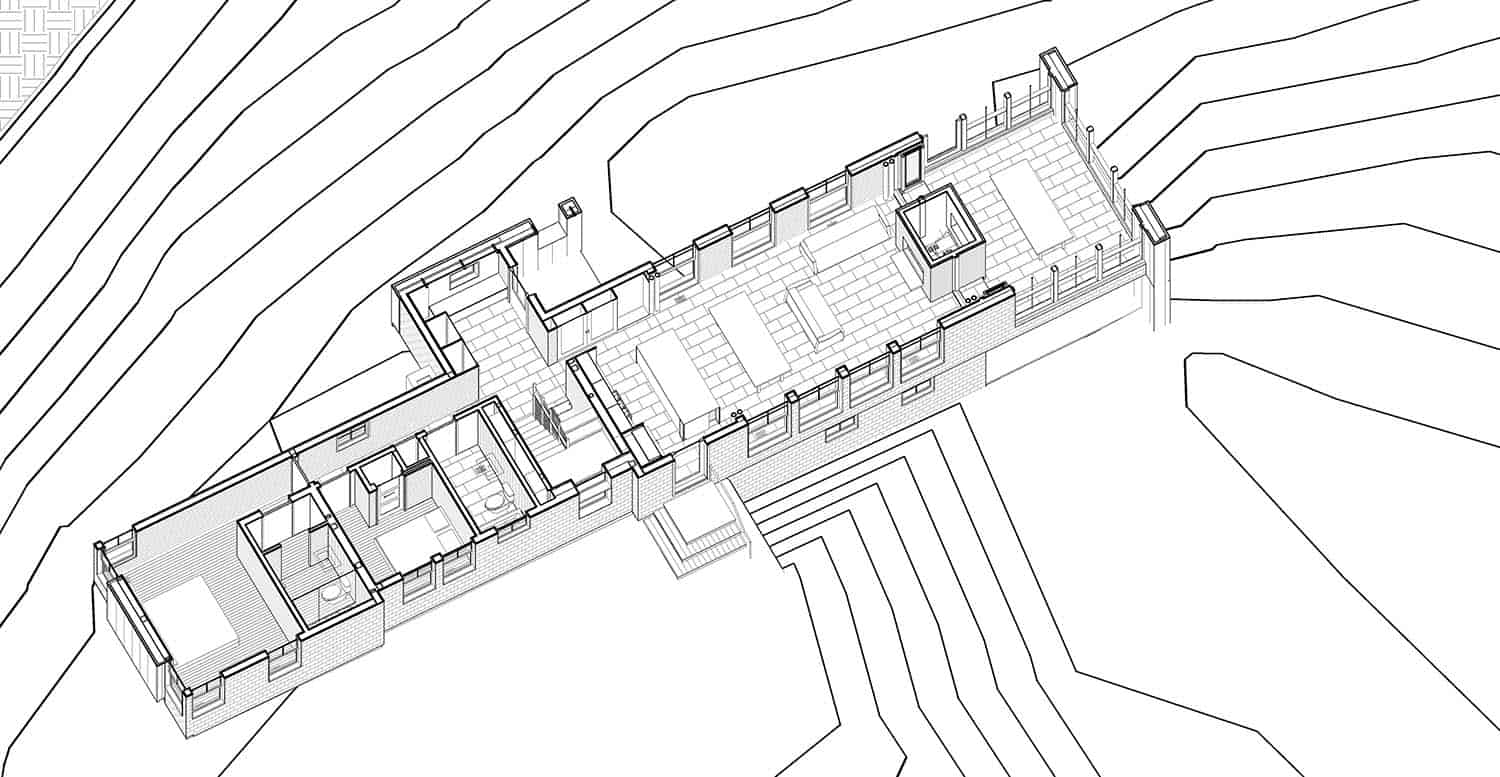


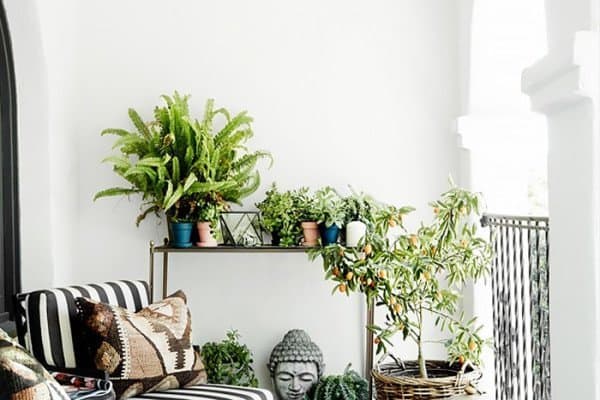
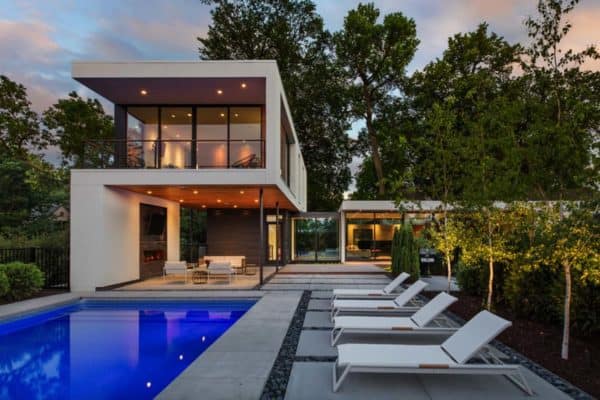
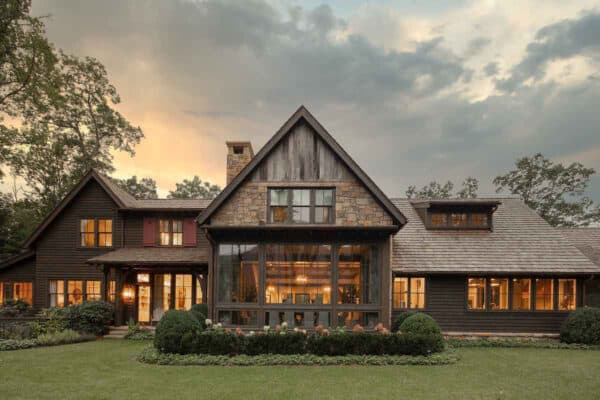


0 comments